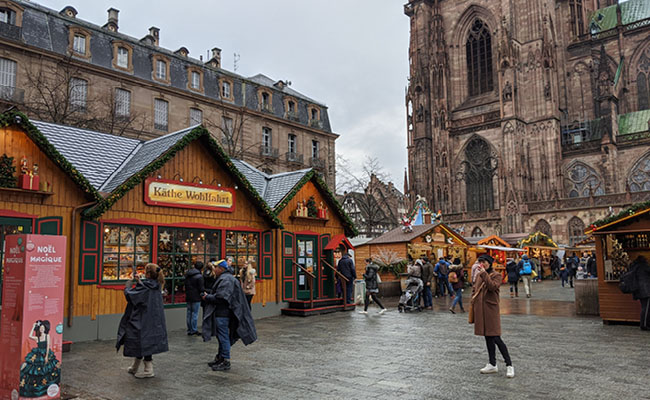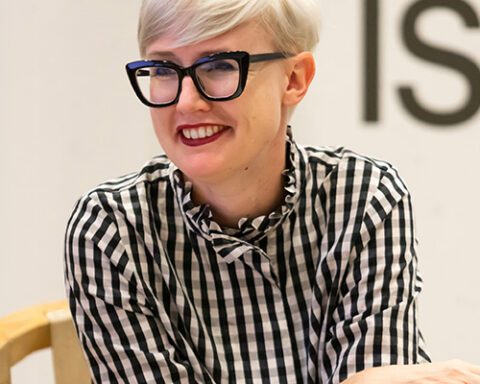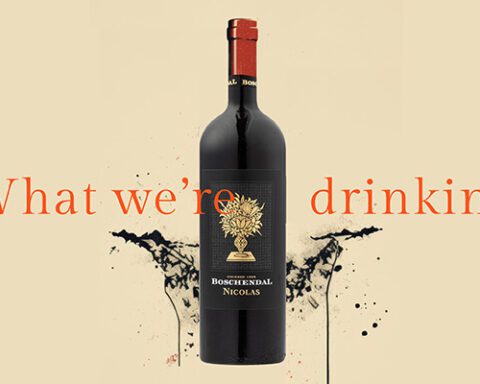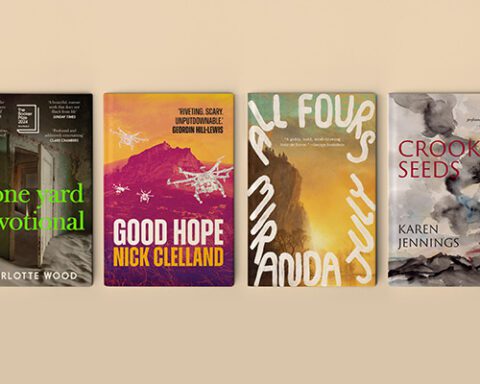This was the deal: we wanted to go to the most Christmassy place in the world. Debatable, for sure, but we reckoned it had to be in Germany.
Strasbourg was our starting point. Now, obviously, we were still in France. But in the shop windows and the streets, you could see a change: the people began to look more like Steffi Graf than Juliette Binoche; if you wanted to buy a nice bottle of something, you were no longer offered just a Burgundy, but also a Riesling. And the architecture of the old town took a decidedly Teutonic turn.
The centrepiece is the Strasbourg Cathedral (Cathédrale Notre-Dame de Strasbourg in French, Liebfrauenmünster zu Straßburg in German). It was to the 17th century what the Burj Khalifa is to us – the tallest building in the world. And it held onto that title for 227 years. At more than 140m, its spire still reaches higher than any building you’ll find in Cape Town.
The main Christmas market is in the churchyard. A quick look at those statues on the cathedral’s wall – martyrs with faces in different stages of agony or exaltation – gives you enough of a chill to reach for the closest mug of gluhwein. Only here it goes by the name vin chaud. Hot wine for cold weather. The sort of climate that convinces all owners of coats to also be wearers of those coats. You need to be able to keep out the breeze, withstand some moisture, and have pockets big enough to holster a pair of gloves.
Christmas markets are made for analogue browsing – dawdling between stalls, gawking at handmade toys, loitering in queues for street snacks. But if you want to browse for long enough, you really should be warm enough – teeth-clattering desperation will force you into some terrible purchasing decisions. Look at enough knitwear before you buy. Strike a balance between functional and beautiful. Or, even better, don’t be in a position that forces you to pay good euros for something like an RC Strasbourg soccer jacket – it could turn out to be a single-use top.
The old town is stunning, and you really should aim to stay in the thick of it. We found a boutique hotel that was a block or so from the action.
Dipping in and out is the best way to approach the market; enchanting enough for an hour or so, but it is hardly an on-your-feet-all-day sort of experience. Even though it has diminishing returns, that first sip of gluhwein is most certainly magical. You can keep the magic going for longer if you visit the market in short stints.
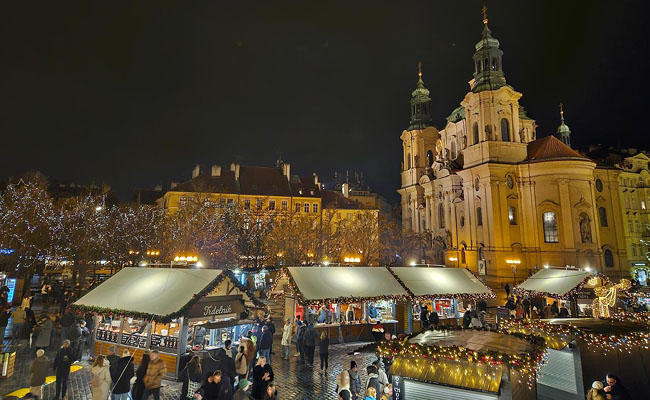
Day tripping
Naturally, the markets all have the same general feel, but each one has a different setting and some small regional variations. So mix it up. Our next stop was Nuremberg, a five-hour train ride away.
The medieval Frauentorturm, a rounded tower in the historic city wall, is the first sight that greets any rail arrival. The old Grand Hotel – an establishment that strikes the perfect balance between affordability (if you convert back to rand), tidiness and charm – is also conveniently located on the doorstep of the old town and just a walk across the street to the main station.
Our game plan was to use Nuremberg as the base and then tick off some of the more romantic towns in the region by taking day trips out by train. It worked beautifully. We stayed three days, visiting Nuremberg’s massive market every evening. Have you ever seen anyone pour you a “draught” of mashed potato and top it with a mushroom sauce? Have you ever seen it done with such Bavarian efficiency? On the sweet side, there is lebkuchen, traditional cookies that date back to the 14th century, and a brilliant browsing snack.
The first day-outing was to Rothenburg, a town on the Tauber River and about a two-hour train ride away. It really is the poster child for Christmas markets. You cross a moat to enter the medieval city wall, walk through a maze of half-timber buildings that looks like a giant advent calendar, and arrive on a sloping high street with a brass band pumping out carols. More gluhwein and an assortment of similar, but slightly different stalls.
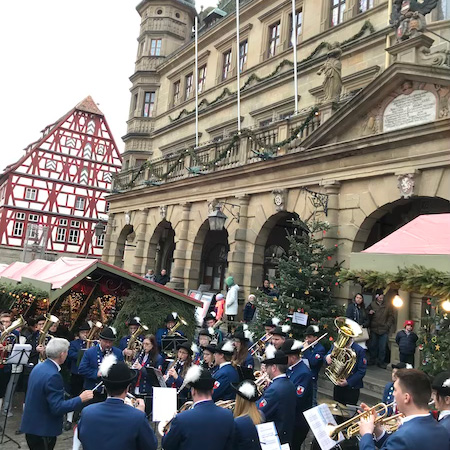
The next day we did the same for Regensburg, a large settlement on the Danube River. Is it a city? Hard to say if you never venture out of the old town. But here’s the thing: if you do the Christmas markets, you’re not aiming for the hangouts of edgy Gen Z Germans. You want the almost ancient stuff, so you stick to the old town.
If it is true for Nuremberg and its neighbours, it is even more so for Munich. This is where we chose to spend the business end of the jolly fortnight. Remember, the market ecosystem is basically a countdown to the big day and most places tend to shut up shop by Christmas Eve.
We treated ourselves to the best accommodation we could afford in the very centre of the old city and booked into the same establishment Michael Jackson frequented when on tour. Bizarrely, a statue in front of the Bayerischer Hotel has been appropriated as a shrine for the King of Pop. Since his death in 2009, fans have been laying wreaths and lighting candles and sticking Thriller posters over the base of poor old Orlando di Lasso’s plinth.
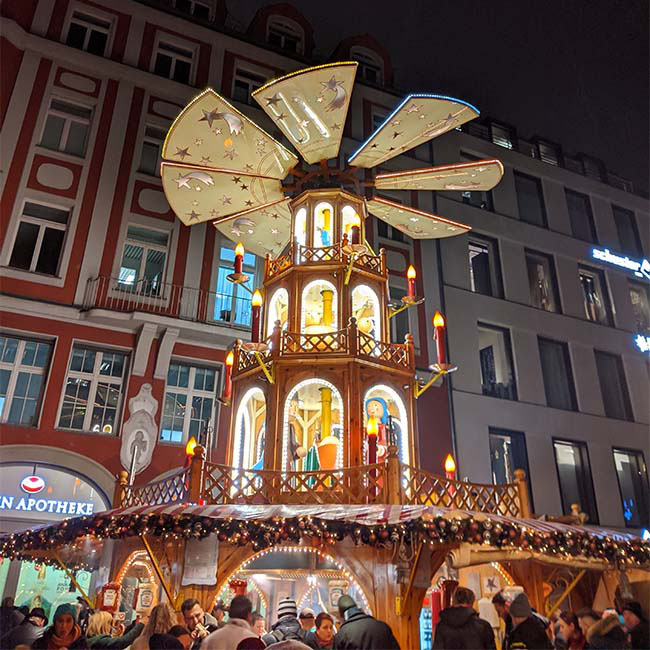
Souvenirs, sorted
Was Di Lasso the MJ of his day? This is what you ponder when you walk the two minutes to the breathtaking market on Munich’s Marienplatz. The “new” town hall, built more than 150 years ago, sports a famous glockenspiel – exactly what you think: 43 bells and 32 life-sized copper figures acting out a drama of a few minutes from the city’s distant past.
Like a clapper striking a bell, it hit me. What to buy as a souvenir or a gift to take back home? It had to be small. It needed some personality. If it was going to be something unwanted, at least it should not have to cling to a fridge all year or sit on a fireplace indefinitely (the word kaggelkakkies comes to mind).
Why not buy a Christmas decoration? Some of the market stalls display charming tree adornments – there are wooden sleighs, petite angels, chiselled Santas, hand-painted tiny gift boxes. Sure, these euro-denominated trinkets are more expensive than Crazy Store tinsel, but they just look more authentic. The number of things you’ll cart back to Joburg could be high, but the space they take up will be low.
The kicker: a festive season decoration can be packed away again and again until the next December. A magical reminder of Munich or Rothenburg, but only once a year. Marie Kondo would be proud. Souvenir clutter minimised. What a thoughtful gift!
Back to the present … From the afternoon of Christmas Eve through the 25th, everything is closed, so stock up on some eats before. A good hotel will have a dinner on the 24th, which is a good option for a last supper. Staying room-bound is probably the best option for the big day – the streets are so empty it could give you post-apocalyptic visions. By the evening, however, the Hofbräuhaus is open. As good a place as any to conclude Christmas with some cheer.
Strasbourg: The charm of the Christmas market with the cathedral looming. Picture: TJ Strydom.
Sign up to Currency’s weekly newsletters to receive your own bulletin of weekday news and weekend treats. Register here.
